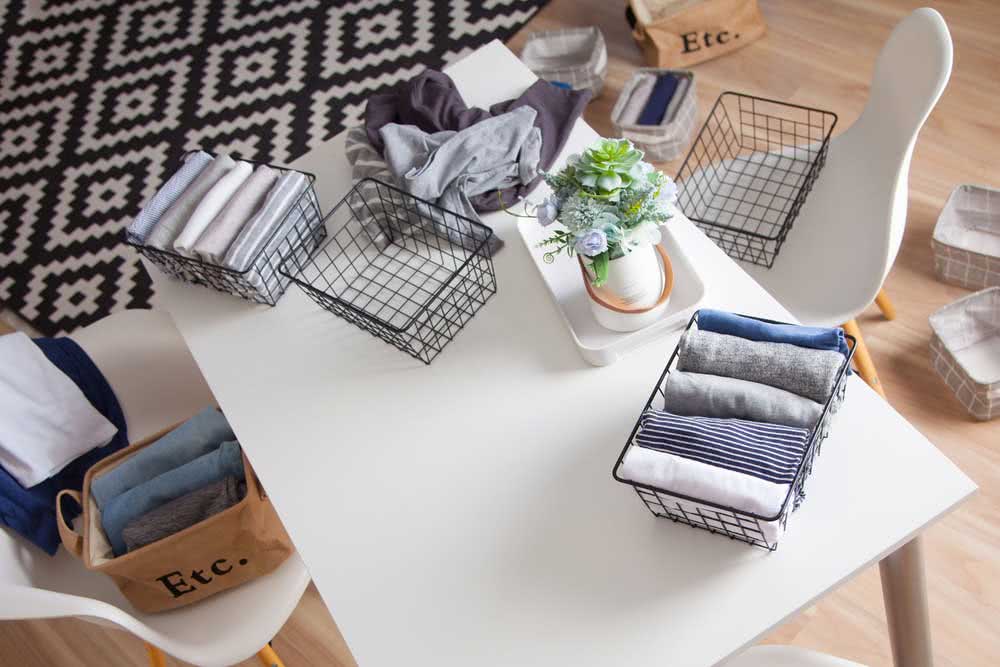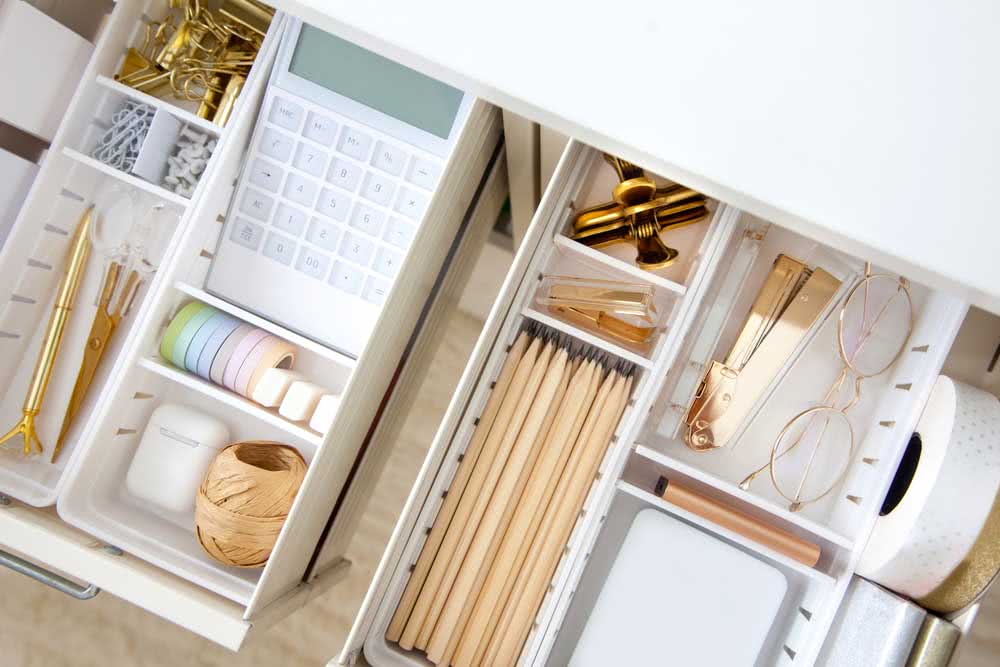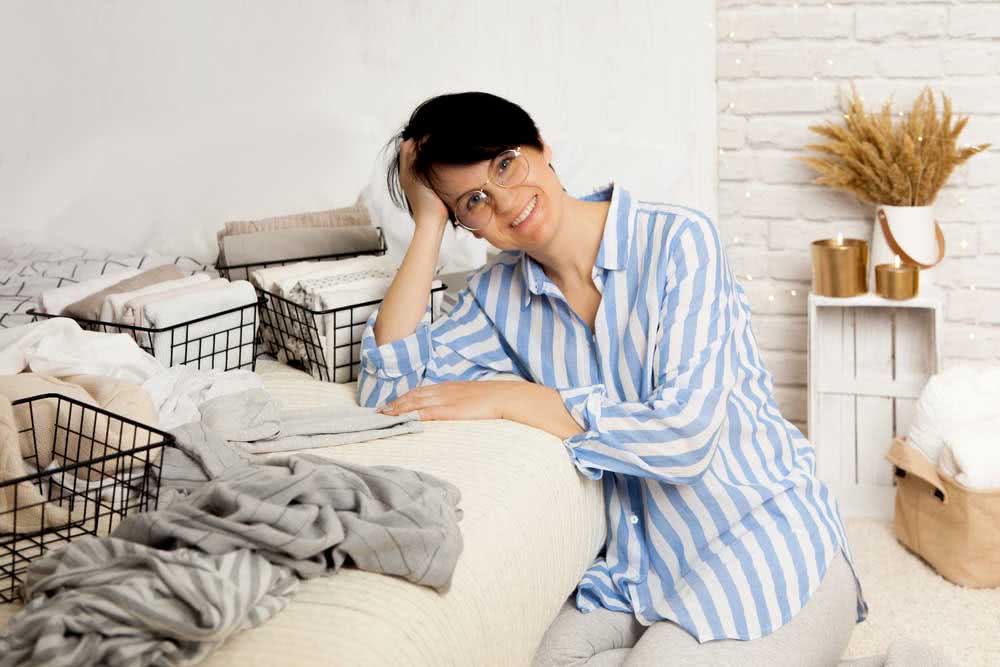Always very friendly and with a smile on her face, the Japanese Marie Kondo conquered the world with her work of organizing homes. And you probably have heard of it.
That’s because recently Kondo launched a series on Netflix called “Ordem na Casa, with Marie Kondo”.
Marie is also the author of the bestsellers « A Mágica da Arrumação » and « Isso me Alegria », reaching the title of the 100 most influential books in Times magazine according to the readers’ opinion.
But what, after all, is so special about Marie Kondo’s work?
That’s what we’re going to tell you in this post. Come and see.
What is the KonMari method

The KonMari method makes reference to the name of its creator, Marie Kondo. The great advantage of the Kondo method is the way it proposes that people deal with objects and the emotions and sensations attributed to them.
Marie proposes a real and true detachment from everything that no longer serves. And the most interesting part of this whole process is that before carrying out the external cleaning, people are inevitably invited to perform an internal cleaning, reframing and assigning new meanings and values to their own lives and, consequently, the house in which they live.
That is, it is not just another cleaning method. It is a concept of organization that needs to flow from the inside out to have an effect. Practically a therapy!
6 steps to apply the KonMari method
To apply the KonMari method in your home and in your life it is important to follow some steps that the creator teaches. See what they are:
1. Pack everything at once

The vast majority of people are in the habit of cleaning and tidying rooms. Tidy up the bedroom, then the living room, then the kitchen and so on.
But for Marie Kondo this idea must be ignored. Instead, adopt the practice of tidying up all at once.
Yes, it is more work. Yes, it requires more commitment. But remember that this method goes beyond organizing objects, it is a way of practicing self-knowledge and everyone knows that this is not always an easy way.
So, send the laziness away and set aside one (or more) days to put the house in order, literally.
In addition to the internal work, this technique of organizing everything at once also has another important objective: to gather similar objects that are mirrored by the house.
Often items such as photos, papers, documents, books and CDs, for example, are everywhere and this creates disorder and disrupts the location of these objects when you need them.
Therefore, the tip is to open a space (it could be the living room floor) to gather all (everyone!) Your belongings.
Once you have done that you can move on to the next step.
2. Create categories

With everything you have visible to your eyes, start creating categories to make storage easier. Marie Kondo suggests creating five main categories:
- Clothes
- Books
- Papers and documents
- Miscellaneous items (komono)
- Sentimental items
By clothes, understand everything you use to dress and dress your home, ranging from shirts and pants to sheets and bath towels.
Within the clothing category, Marie guides to create subcategories such as top clothes (t-shirts, blouses, etc.), underwear (pants, skirts, shorts, etc.), clothes to be hung (jackets, dress shirts, suits), dresses, socks and underwear, sports clothes, clothes for events and parties, shoes, bags, accessories and jewelry. Also create a sub-category for bed, bath and table linen.
Separated everything? The next step is books. Also divide them into subcategories, such as entertainment books (novels, fiction, etc.), practical books (recipes and studies), visual books, such as photography books and, finally, magazines.
The next category is papers and documents. Include here the personal documents of the whole family (RG, CPF, CNH, electoral titles, vaccination card, work card, etc.), payslips, insurance, birth and marriage certificates, as well as product manuals and guarantees, proof of payments, receipts, checkbooks and whatever else you have at home. It is worth looking for papers and documents in bags, backpacks and even in the car. The important thing is to bring everything together.
Then comes the category of miscellaneous items, called by Marie komomo, a word in Japanese that means « small objects ». Here you include kitchen items, electronics, makeup and hygiene products, tools, leisure objects, such as games, for example, among other things.
Finally, but still very important, comes the sentimental items, those more difficult to undo. Family photos, postcards, notebooks, diaries and diaries, travel trinkets, pieces you received as a gift and everything else that has a special value for you or someone in your family fall into this category.
Were all the mounds made? Then skip to the next step.
3. Feel joy

This is probably one of the steps that most characterize the KonMari method. The goal in this step is to make you feel every item you have stored at home.
Marie Kondo teaches that you need to hold each object in your hands, look at it and feel it.
But feel what? Joy! Basically, this is what Kondo expects people to feel about holding a personal belonging.
If that feeling comes to light, it is a sign that you should and need to keep the object in question, but if holding it feels indifferent or negative, it is best to undo it.
For Marie Kondo, people should have in their homes and in their lives only that which brings joy, as simple as that. Everything else can be discarded (read donated).
And a tip from the creator of the method: start doing this sorting in the order of categories mentioned above, starting with the clothes. The sentimental items are the most difficult to undo, so they should be last, after you have « trained » with the other objects.
4. Thank and say goodbye

After analyzing each of your objects, you must decide what remains and what goes from the sensation they caused.
Those belongings that do not arouse joy or other positive feeling should be sent for donation (if they are in good condition), for recycling (if applicable) or, ultimately, for trash (if there is no other way).
However, before putting him out of the house, Marie teaches him to perform a small detachment ritual.
To do this, you must place the object in your hands and then, with a simple and objective gesture, give thanks for the time it has been useful to you. At that point, the object is ready to be discarded.
Marie Kondo explains that this gesture of thanks helps people to get rid of possible feelings of guilt and the frustration of being getting rid of something.
5. Discard to organize
Now that you’ve separated and discarded everything you need, it’s time to get ready to organize. That is, put what is left back in place.
For this, the KonMari method teaches that objects should be grouped by categories (as you should have done in the previous steps) and kept together.
For Marie, the essence of a messy house lies in the fact that people are more concerned with how easy it is to find what they are looking for than to easily keep what they have in their hands. Therefore, the most important thing is to know exactly how and where to store each thing and not the other way around.
6. Organizing is different from saving
Another very important step in the KonMari method is to know how to differentiate “store” from “tidy up”. A house that has only “stored” objects is not necessarily an organized house, just remember the avalanche cabinets that exist out there.
Tidiness, on the contrary, is to keep everything as organized as possible.
One of the great examples of storing the KonMari method is clothes. Marie teaches how to tidy the cabinet pieces folded in a rectangular shape and arranged in a vertical position, that is, they are next to each other, like books displayed in a library, in contrast to the traditional horizontal storage, where the pieces are kept one on top of the others.
In the method proposed by Kondo, the pieces are all visible when passing the eyes and you can pick up any one of them very easily without having to disassemble an entire pile of clothes.
Keep organization
After all the work to organize the house it is very likely that you will want to keep it that way.
Therefore, Marie advises that everything that has been used must go back to the place of origin.
The kitchen and bathroom must be the most functional and organized rooms in the house. This means that the only objects that must be exposed are those used on a daily basis.
Simplicity is another key factor in maintaining the organization. The simpler you are able to leave your home to perform tasks, the easier it will be to stay organized.
And then ready to put the KonMari method into action there in your home?



